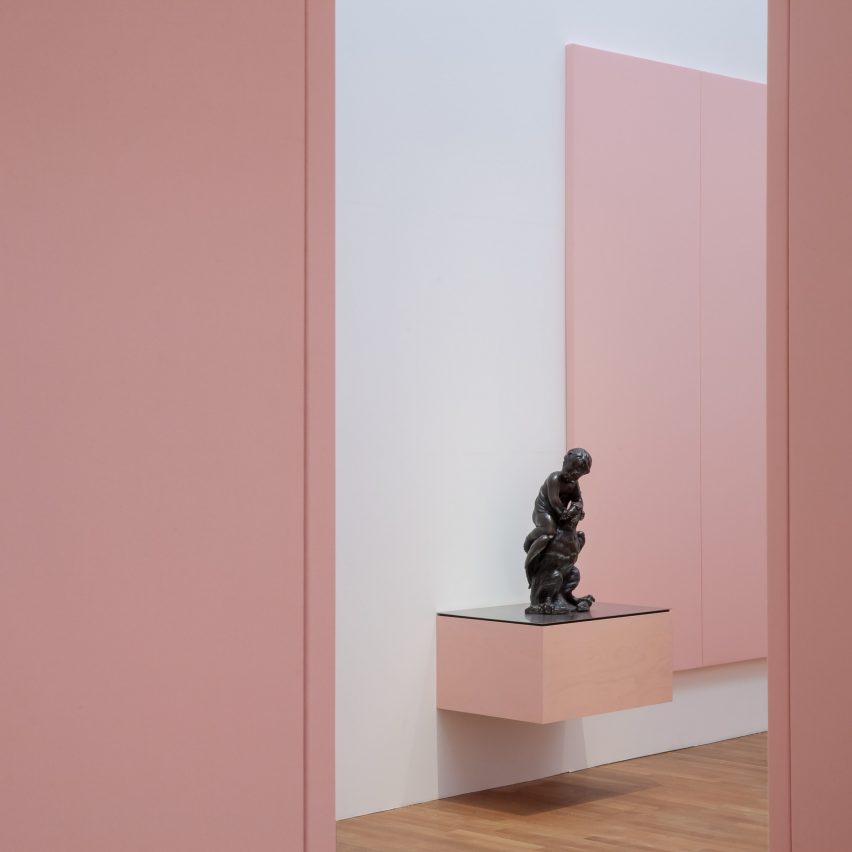
Architecture studio Formafantasma has created a display for the Rijksmuseum's Baroque in Rome exhibition that will be taken apart and recycled afterwards.
The Amsterdam art show features 16th and 17th century Italian baroque masterpieces by artists including the painter Caravaggio and the sculptor Bernini.
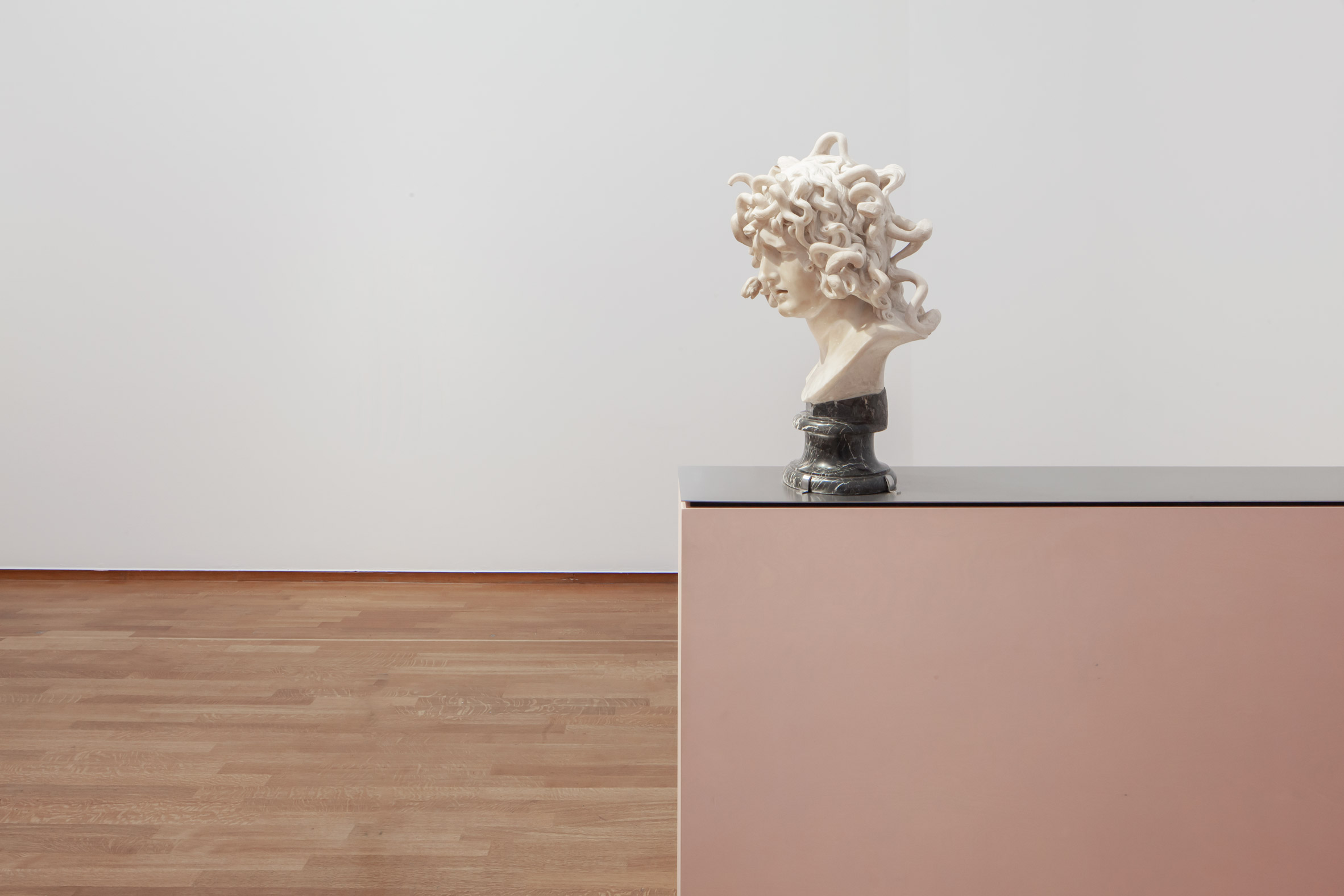
Formafantasma broke with the tradition of displaying baroque art in dark rooms, instead opting for the white walls and modern colours of a contemporary art show.
Paintings are hung off-centre against panels covered in colourful Kvadrat fabric, which will be given to local fashion schools after the exhibition closes. Kvadrat is a major sponsor for the exhibition.
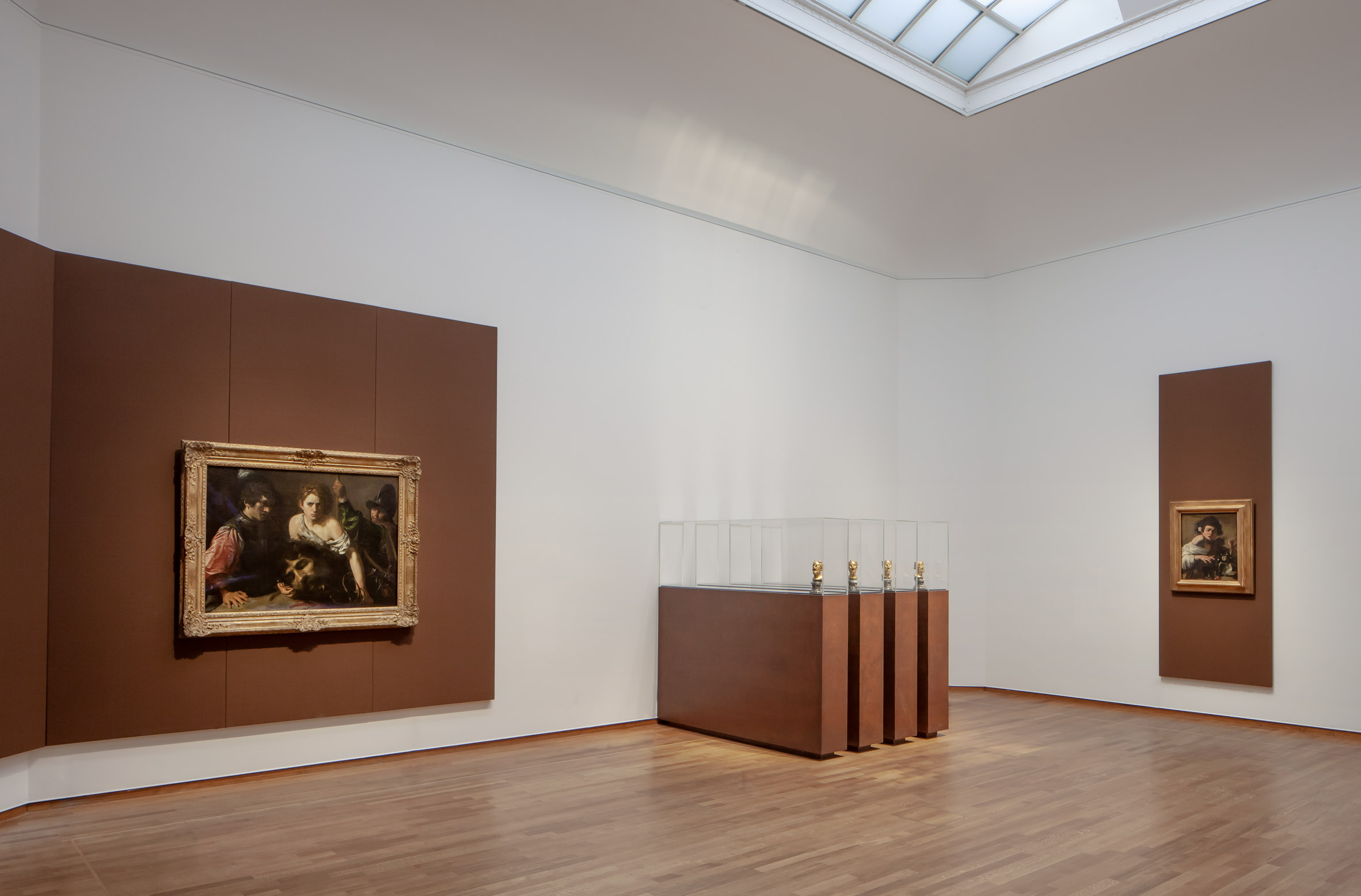
Sculptures are displayed on standard-issue sheets of steel on top of plywood boxes painted to match the fabric. These basic materials will be recycled afterwards.
"We worked very closely with the people that built the exhibition because of course, when you do an exhibition like this, there is also a lot of waste," Formafantasma co-founder Andrea Trimarchi told Dezeen.
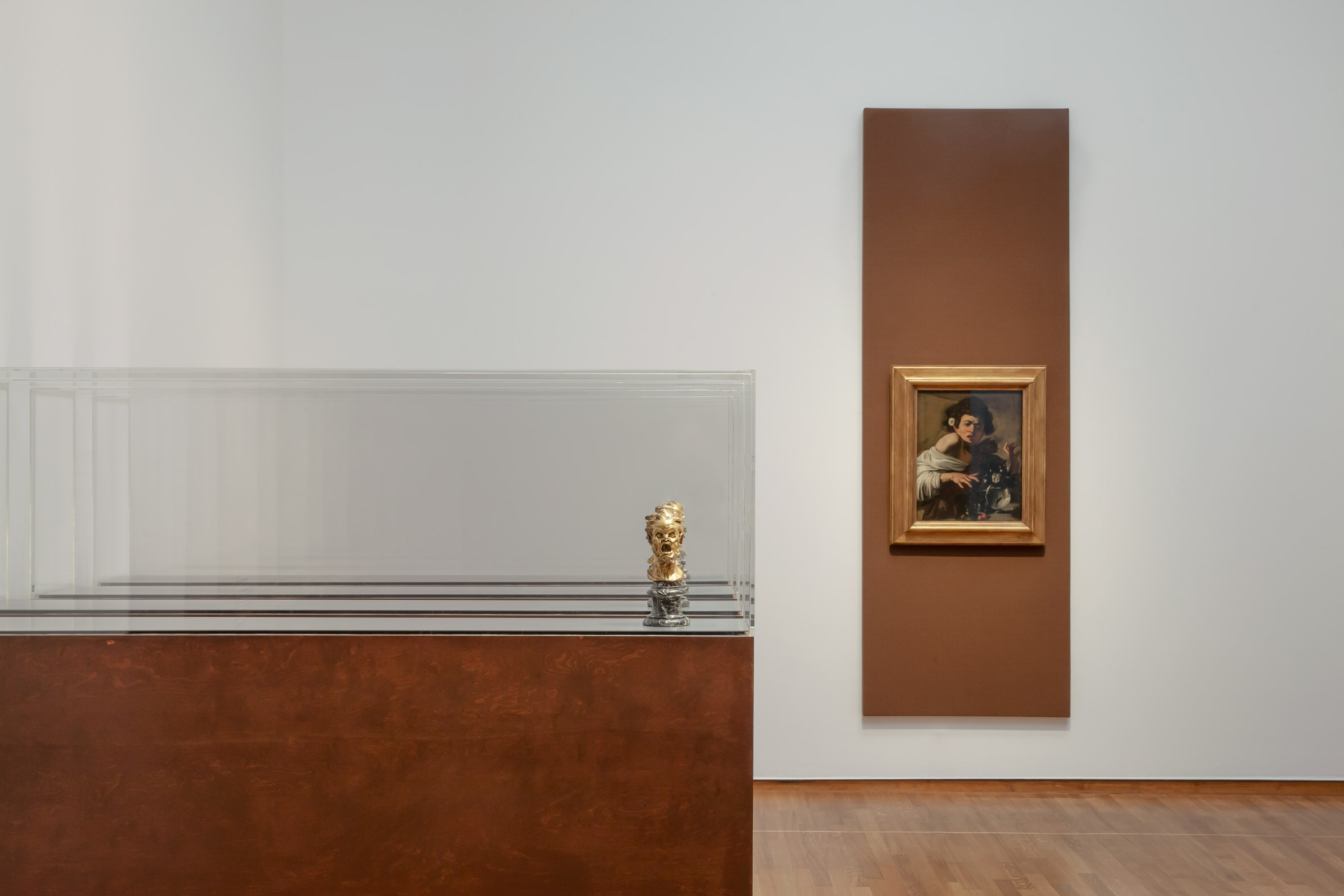
"Even the sizes of the panels were maximised to make sure that we were not cutting either the beams or the textile in a way that was useless [for reuse]," added co-founder Simone Farresin.
The white-painted walls behind the panels will be used by the Rijksmuseum for two more exhibitions after Baroque in Rome finishes.
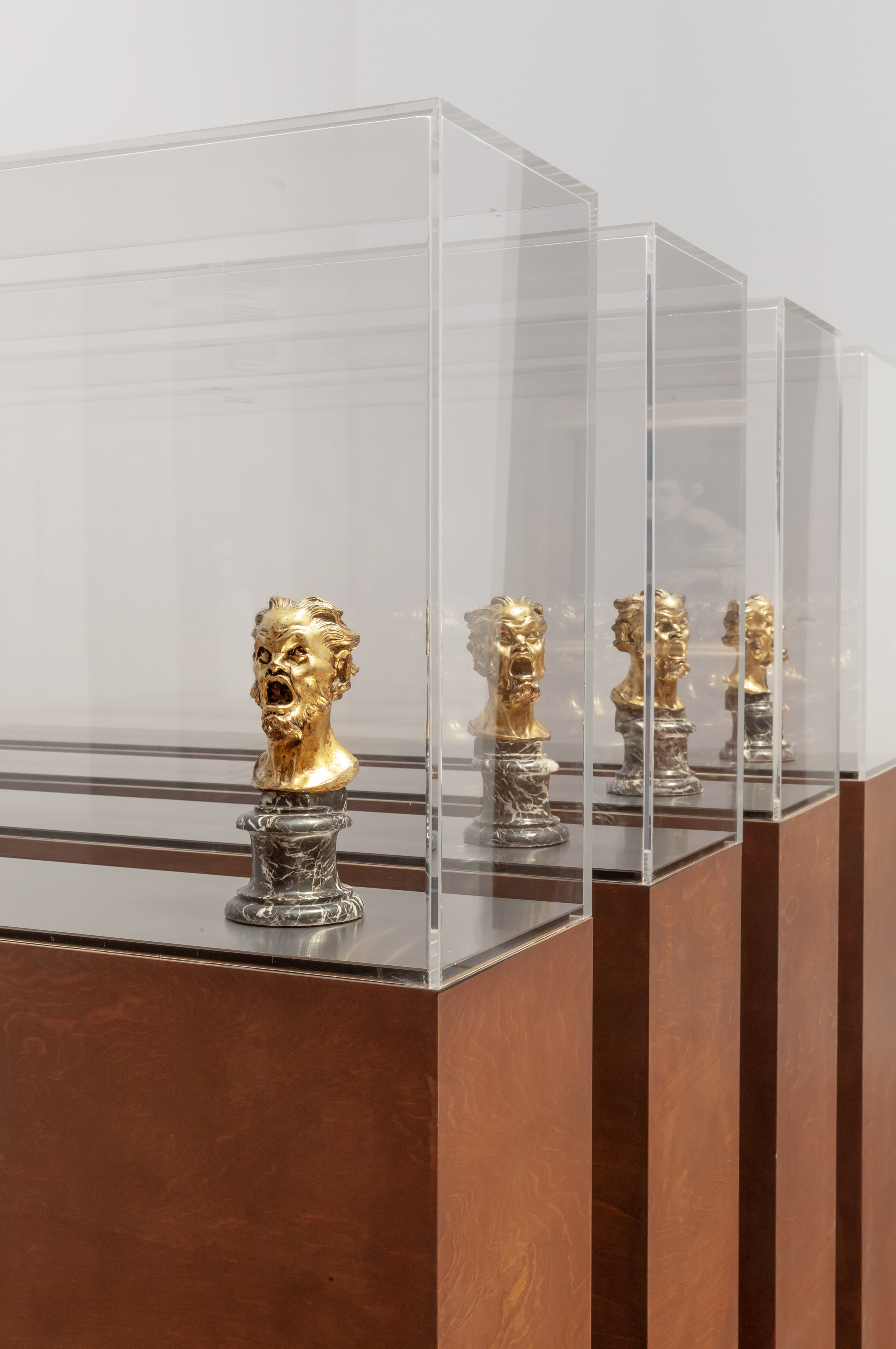
As well as being more sustainable than painted backdrops that would need to be painted over afterwards, the textiles are a nod to historic wall coverings, which were often fabric rather than paint.
"It was how the paintings were exhibited in the past," said Trimarchi.
"With contemporary paint, when you have one colour it becomes immediately flat," added Farresin, whereas textiles add depth and "another level of complexity".

Each room of the exhibition is themed around one colour, and the art is curated to a particular mood associated with the baroque.
Humorous statues of putties cavorting with masks and animals are grouped under the theme scherzo, or jest, against a backdrop of playful pink.
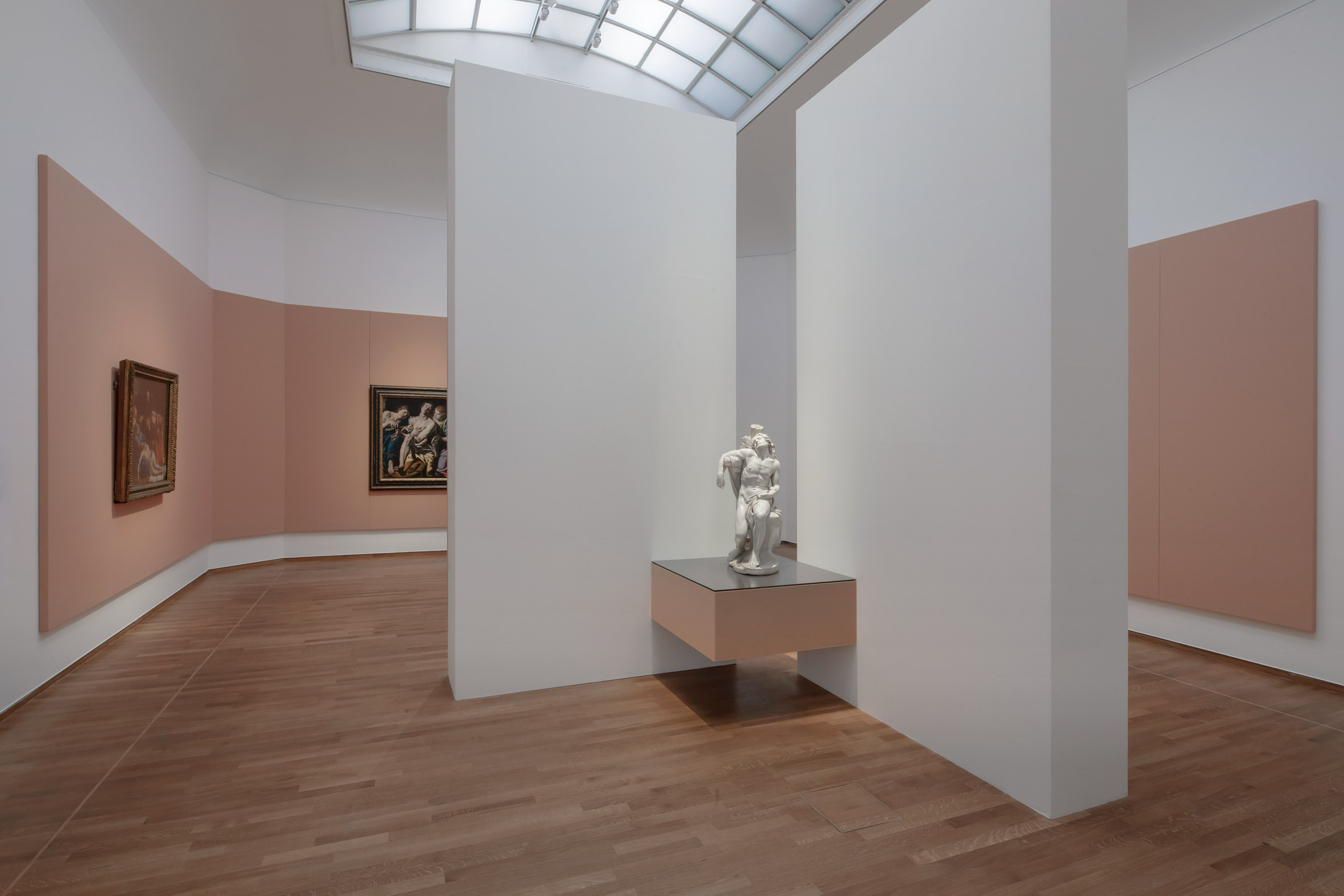
A single statue of a sleeping cherub by Alessandro Algardi in black marble sits in a room on a sea of steel surrounded by inky-blue fabric picked out with starry sparkles created by fashion designer Raf Simmons for Kvadrat.
Using steel, a modern material, against the old marble statues was a deliberate break with art history convention.
"We wanted to have a sort of industrial feeling to it," said Farresin.
The steel reflects the light to create a column-shaped aura around the stone statues.
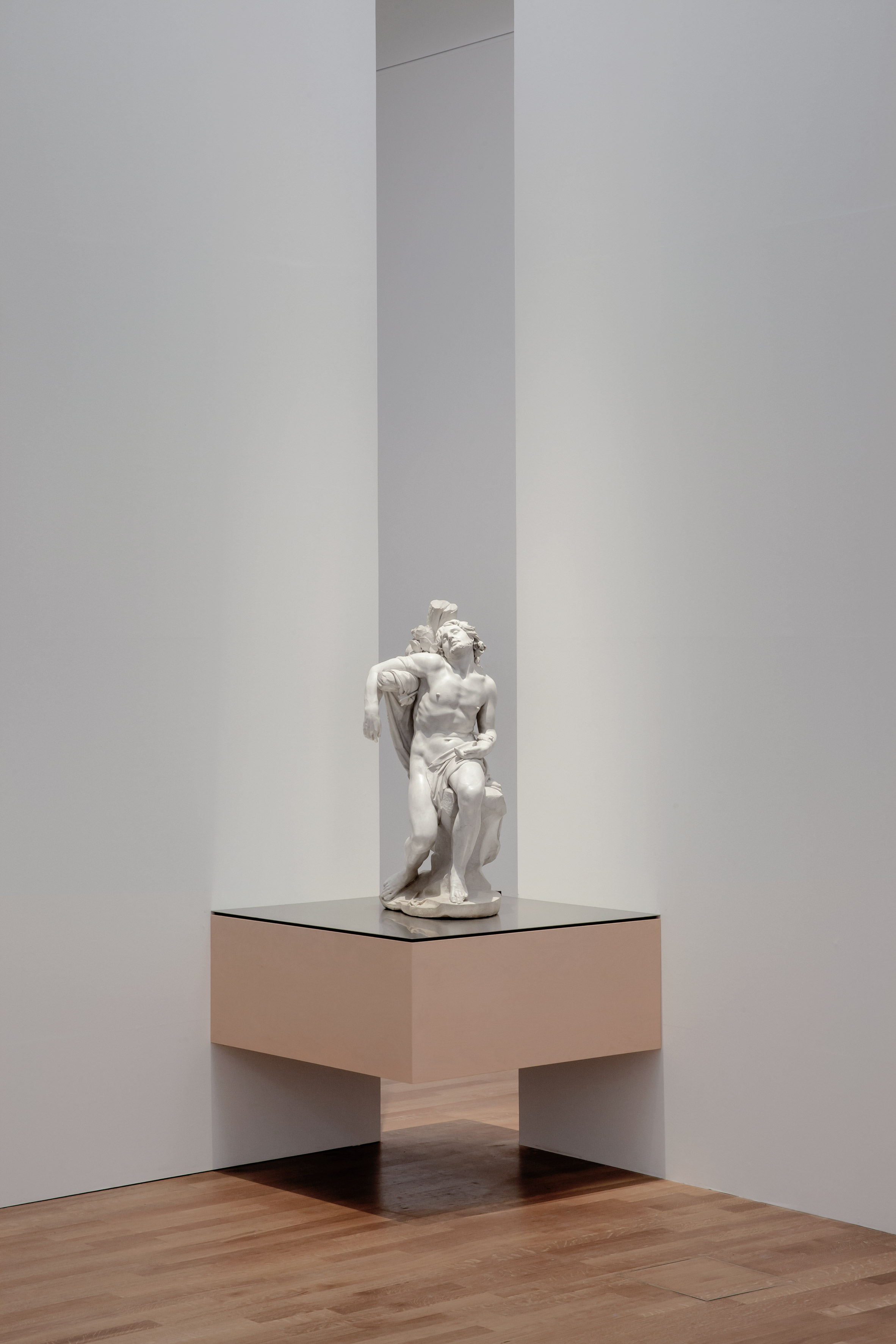
Simple, Donald Judd-esque plywood boxes project from the walls at different lengths to create a layered exhibition experience.
Glass for the boxes used to surround some of the sculptures was sourced from previous exhibitions.
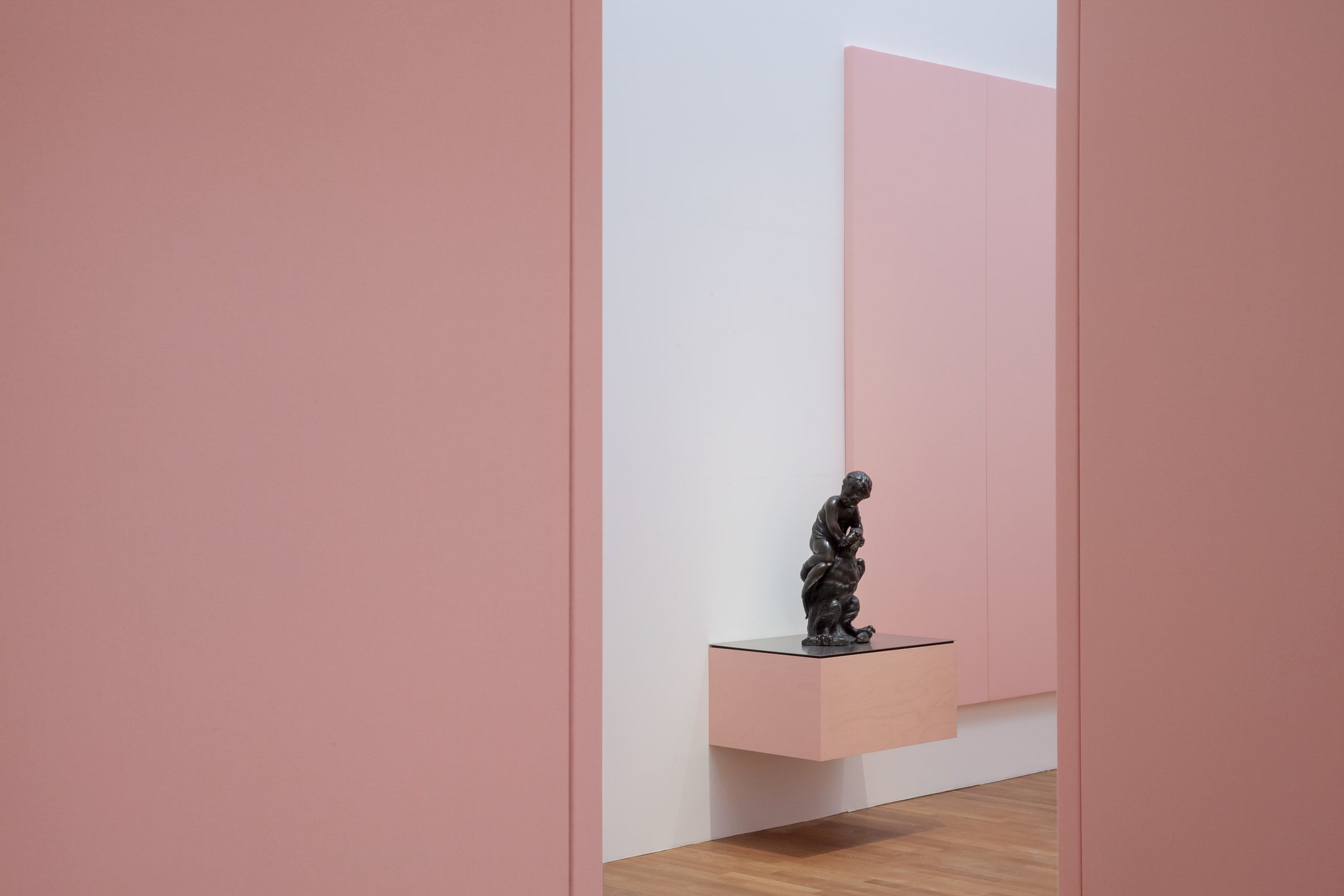
An arrangement of extendable flats and architectural elements were used to break up the gallery spaces and produce unusual lines of sight.
"In the exhibition there are things that, if you pay attention, they will emerge over time," said Farresin.
Paintings are angled towards each other to create interesting dialogues and motifs. In one room different paintings of Christ demonstrating his wounds and female saints swooning in ecstasy are all displayed against a backdrop of pale blue.
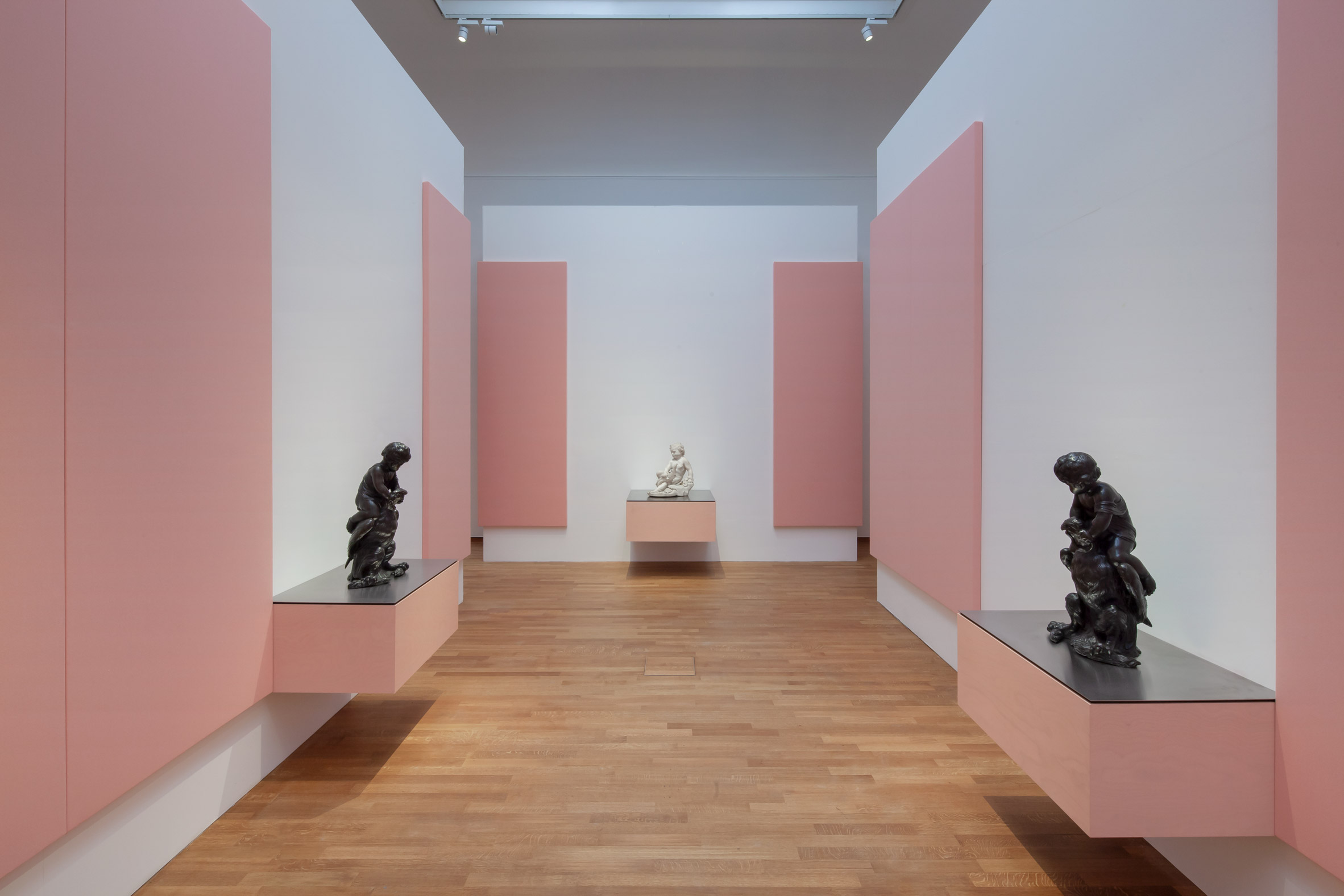
In another room, a statue of a martyr is suspended on a platform between two walls, up-lit by light glancing off the steel base. When viewed from another angle it contrasts with another statue of a putti that's been bitten by a dolphin.
The walls of pink, jest-themed room were brought forward to create a more intimate space that stops the visitor from passing through straight to the next set of doors.
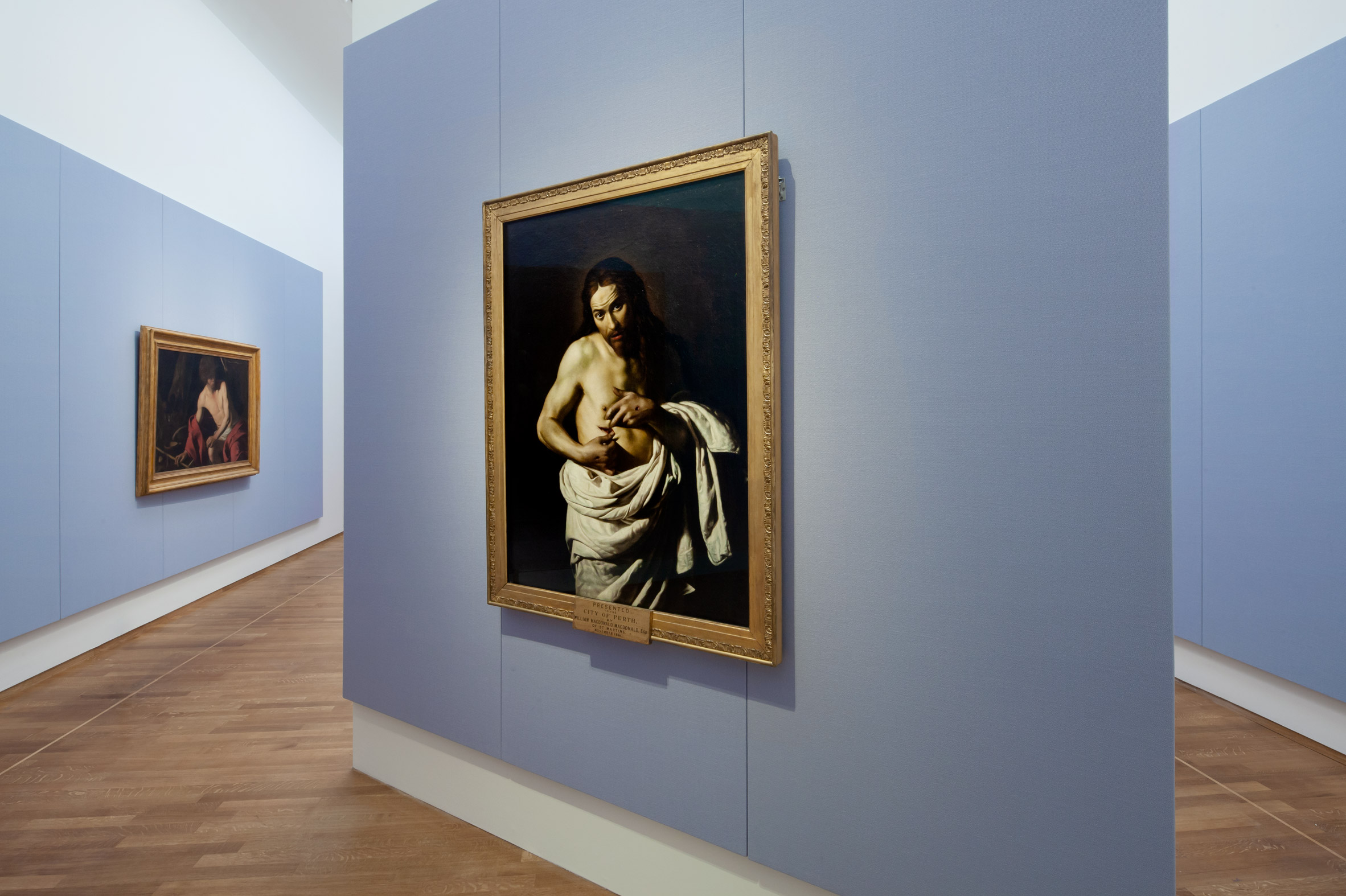
"These expandable walls are all built in a structure that has been developed by the builders that work very often with the Rijksmuseum, so they will be reused in other exhibitions," explained Trimarchi.
Simple plywood benches, painted to match the fabric panels and podiums, provide places for visitors to sit throughout.
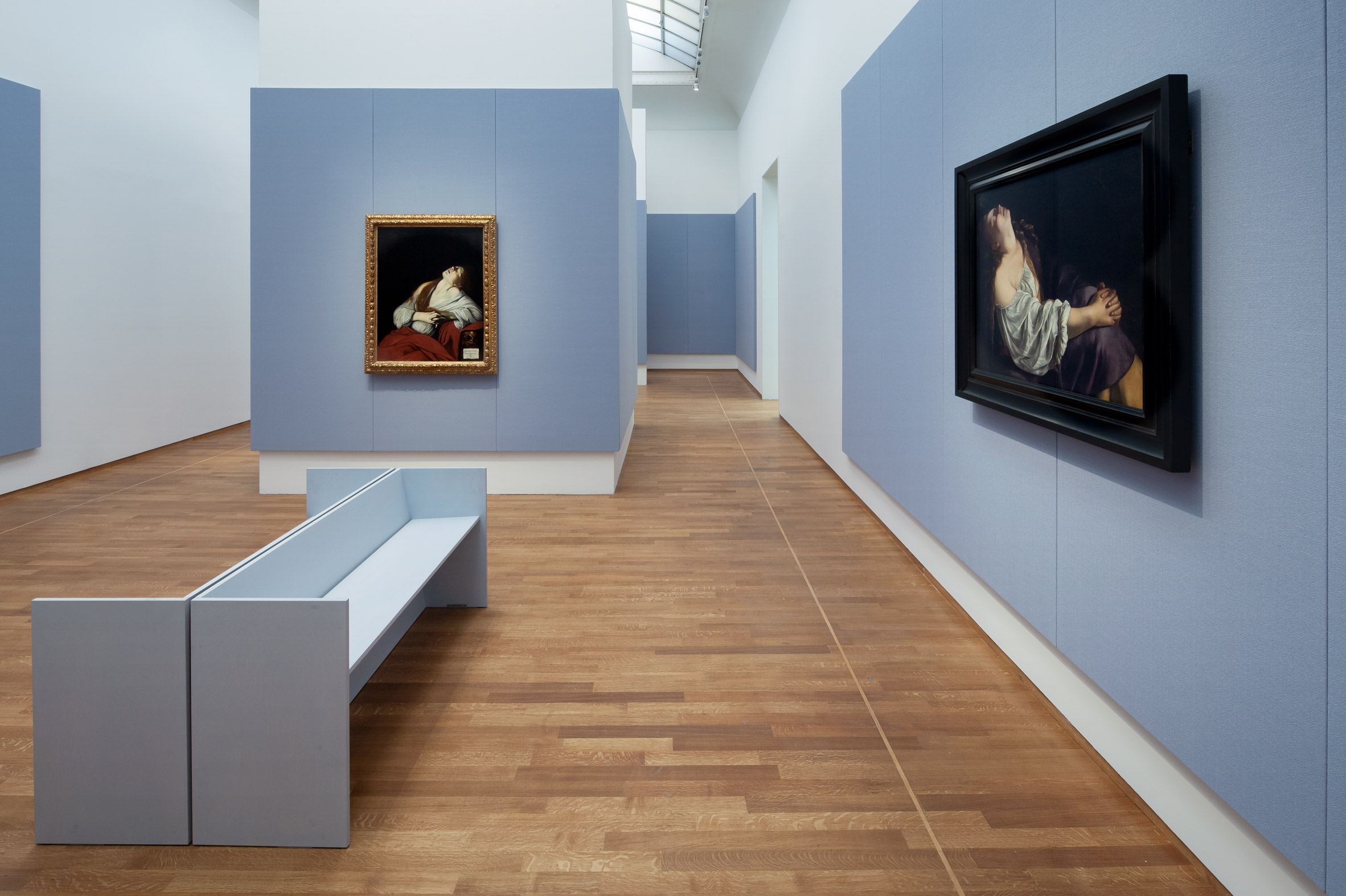
Sustainability is central to Formafantasma's work. They launched a campaign to encourage designers to create more sustainable technology after a two-year research project looking at e-waste, and made mining-free tiles from volcanic ash.
Brands and institutions are increasingly thinking about how they can be more sustainable with exhibitions and installations. At Stockholm Furniture and Light Fair, Note Design Studio made a stand for Tarkett that can be disassembled and recycled.
Baroque in Room is on at the Rijksmuseum until 7 June 2020.
Photography is by Eddo Hartmann.
The post Formafantasma designs recyclable displays for Rijksmuseum exhibition appeared first on Dezeen.
from Dezeen https://ift.tt/2P7WX9i

No comments:
Post a Comment